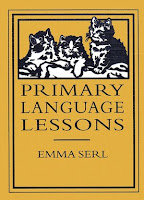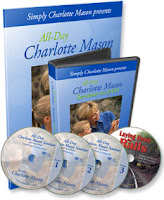 |
| from wikipedia.org |
When we started homeschooling, I immediately jumped into textbooks (not that they’re bad—they’re fantastic for some children), because that’s what I knew.
But after our first year, I felt more confident in branching out and knew I could find something to fit all of my children’s learning styles.
After researching several educational methods, Charlotte Mason stood out front and center.
Living Books
Using “living books” was our biggest reason for abandoning the traditional textbook approach. I also loved using Narration, Dictation, Copy Work, Fine Art study, and focusing on crafts with a purpose.
Ditching the “twaddle” became our family’s mission, and our school is virtually twaddle-free.
There have definitely been some adjustments, but some great advantages!
Living Books have replaced our texts for Science and History, with Living Books, Notebooking, and Nature Study. No formal grammar work is encouraged until at least age ten, which was a difficult thing to break from.
In the beginning, the children are exposed to as much good literature as possible. While Morgan is just now starting to dabble in parts of speech through Emma Serl’s Intermediate Language Lessons, she has already read books such as Moby Dick, Alice in Wonderland, and The Chronicles of Narnia series. So they’re learning Language Arts by exposure to good works before jumping into rules and drill.
And tests! Not using tests also took some time to get used to, but when using Narration, I get a good grasp on what they’re learning and what we need to revisit. Simply memorizing dates won’t get them through one of these history lessons.
Discipline, Habits, and Education as a Way of Life
Even Bible is taught using a combination of Narration, Dictation, and Copy Work.
Forming good habits was also important to Miss Mason and there are several notes written to the mother. Some of the things she writes make me say, “Ouch.” But they’re usually dead on.
We use My Father’s World (MFW) curriculum and this is our 3rd year. We’re currently in the 1st year of the 5 year cycle.
MFW takes the Charlotte Mason approach, Classical, and Unit Studies and wraps them into one package that is already laid out and can include multiple ages.
But there are several other resources on the web:
And if you really want to see some examples first hand, there’s the All-Day Charlotte Mason Seminar on DVD
My favorite books on the Charlotte Mason method:
I haven’t read this one yet, but would like to!
If you use her methods, have questions, input, etc., either leave a comment here or check out the discussion page on Facebook by clicking on the button above.

Thank you for subscribing! Please follow this link to download your free gift, 110 Uses for the Everyday Oils Kit: https://bit.ly/1dbmvLT
Free Guide For the Natural Living Mom

Want to know how to use essential oils and herbs in your home? In this guide, I share my top 10 favorites.
Plus get our latest content and news, including giveaways and freebies for the natural living and homeschooling mom.




I’ve heard many good things about this method. It sounds like a great one! 🙂
It took some adjusting to, but makes a lot of sense. We still use textbooks for math but use lots of manipulatives (another one of Ms. Mason’s ideas.)
I love CM…both MFW and SCM! I also love Karen Andreola’s other books! Makes me smile just thinking about it! By the way…love the looks and encouragement in your blog!
Thanks for visiting, Rachel. 🙂 I’ve found SCM to be rather addictive and have learned a lot. 🙂